Huddled between the mist haloed Tenasserim Hills on the wiggling River Kwai, Kanchanaburi is a taste of rural Thailand that comes with a hefty side dish of history.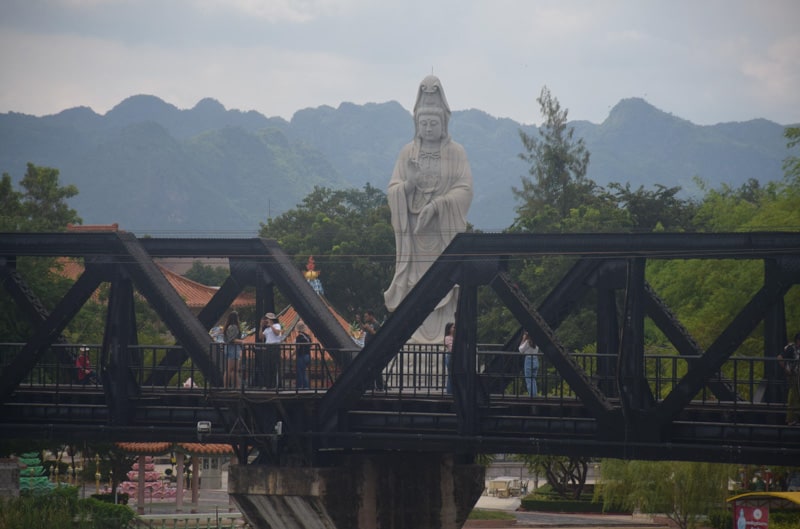
The town is best known as the setting for the 1957 Oscar-winner The Bridge on the River Kwai, which tells the story of the arduous construction of the Burma Railway. Those very same tracks can still be seen today. They draw history buffs, who can hop between WWII sites, memorials, military cemeteries and immersive museums.
Planning a trip to Thailand and not completely sure where you should go? Here´s a 2-week Itinerary for Northern Thailand.
But Kanchanaburi isn’t all about the past. This is a chilled-out, easy-going river town with plenty of character. The murky Kwai flows freely through its heart, fringed by bamboo bungalows and cute hotels with flower-filled gardens. The main road is a buzzy length of Thai veggie kitchens and cool reggae bars. And, last but certainly not least, it’s the perfect jumping-off point for exploring the stunning seven-tier waterfall in the Erawan National Park.
Where exactly is Kanchanaburi?
A mere 85 miles west of Bangkok, Kanchanaburi sits on the edge of the mountains that run up the border between Thailand and Myanmar. It’s the capital of its own region, which spreads all the way to the frontier village of Payathonzu through the wilds of Khao Laem National Park and Erawan. The town itself straddles the famous waters of the Kwai as it bends southwards and separates to become the Khwae Noi and Mae Klong rivers.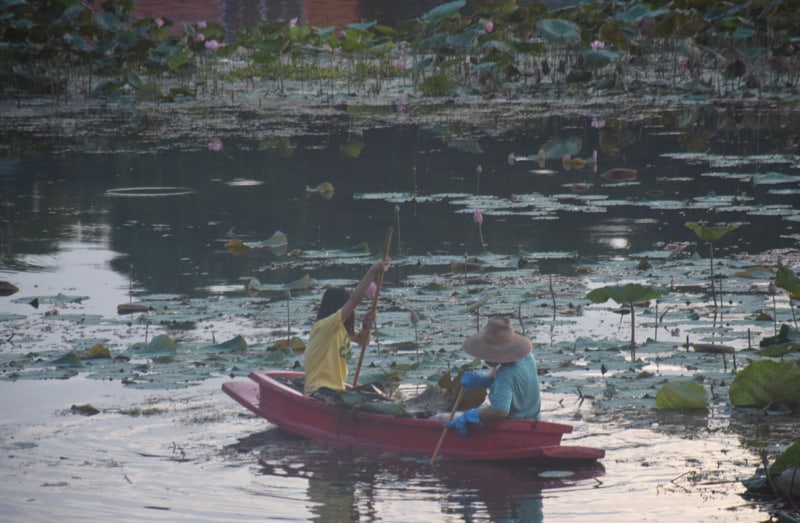
To Things To Do In Kanchanaburi.
From sobering tales of WWII history to stunning natural landscapes on the borderlands with Burma, Kanchanaburi has lots up its sleeve…
See the bridge on the River Kwai.
Very much the focal point of the town’s tourism, the iron-wrought bridge over the River Kwai can be found on the north-western end of the main Maenamkwai Road. The current structure has been rebuilt several times since the end of the war, largely to replace sections that were lost to Allied bombing. However, it’s in the same location as the bridge that inspired the classic movie.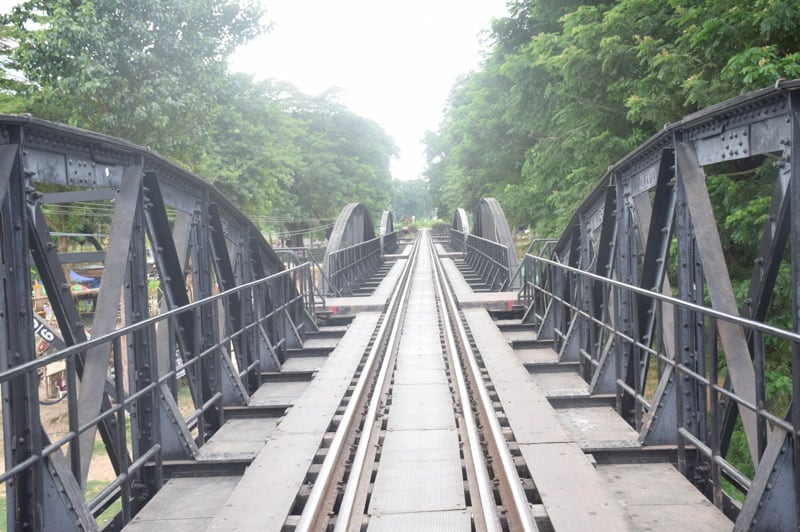
The best way to see the bridge is to walk across from the end of New Zealand Alley. Metal grids have been laid to help create a safe walking path, and there are protruding platforms to use if a train comes – yep, the tracks are still in action. A top photo spot is on the less-busy opposite side of the Kwai, where a dusty marketplace has views of the iron girders of the bridge itself, not to mention the rugged mountains behind.
Bathe in the Erawan Falls.
It’s about an hour’s drive deep into the jungles and mountains to the north-west of Kanchanaburi to reach the Erawan Falls. They are the centrepiece of the Erawan National Park, famed for cascading down a whopping seven tiers as they gush from pool to pond to stream.
You’ll be dropped at a visitor’s centre where trailheads herald the entrance to the national park. Pay the 300 THB entry and then it’s onto the pools. They glisten turquoise blue under lush teak trees and palms, offering swimming spots where tiny tropical fish nibble at your feet.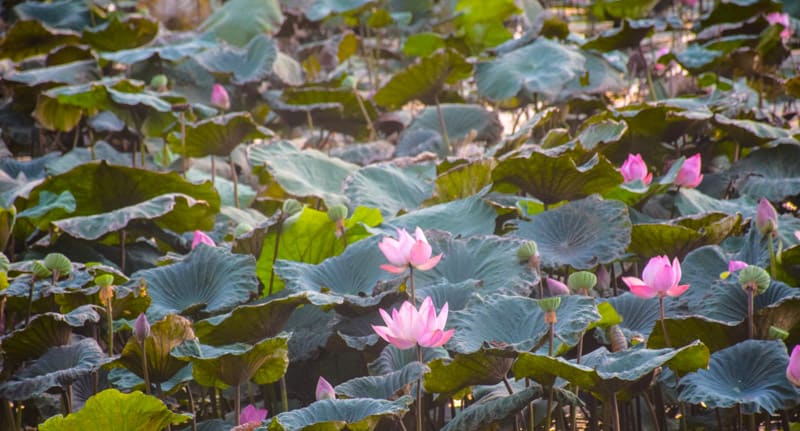
We recommend going to Erawan as early as possible, to avoid the big tour groups that come in from as far afield as Lop Buri and Bangkok.
Unravel history at the JEATH War Museum and the Thailand-Burma Railway Centre.
To understand the history of the infamous Death Railway and the bridge over the River Kwai, you should be sure to hit the JEATH War Museum. It chronicles the building of the line between the years of 1942 and 1943, through collections that reveal the striking POW living conditions, the engineering feats of the railway, and the tactical advantages the Japanese occupiers hoped to gain with its construction.
The Thailand-Burma Railway Centre (located next door to the main train station in Kanchanaburi) is considered to be an all-round more informative exhibition, though. It’s run by an Aussie expat who’s a global expert in the wartime history of the region. Interactive TV films and photographic collections help to tell the sobering tale of the railway’s building throughout the early 1940s there.
Have dinner and drinks on the riverside.
There’s no denying just how pretty Kanchanaburi can be. Clusters of lily pads bloom with lotus flowers on the surface of the Kwai River, which drifts in slow motion through the middle of the town. Around it, charming little cafés, restaurants and hotels offer places to sit, eat and relax with views across the water and the craggy mountains that jut over the horizon. Try to grab a good place for the evening sunset. That’s when the light dips low behind the summits in the west, and ochre-red hues shimmer over the jungles and rice paddies.
Go to the Hellfire Pass.
Hellfire Pass is up there with the most unique war memorials in the world. Once claimed by the jungles, it’s a huge manmade canyon that was gorged from the mountainsides by POWs during WWII. It’s thought to have been one of the most challenging – and deadly – undertakings during the construction of the Death Railway. These days, visitors can walk between the dynamited sides of the mountain to lookouts above the Kwai River under the guidance of informative audio commentary.
How to get to Kanchanaburi.
Kanchanaburi is one of the obvious first stops for travellers making their way through Thailand from buzzing Bangkok. It’s well-linked to the capital by both bus and train. The bus is the simplest, cheapest and quickest way to arrive. It costs around 150 THB for a seat on an air-conditioned minivan that holds 12 people. The journey takes approximately four hours.
You might find the train is a much more exciting prospect, however. It rolls through the outskirts of Bangkok, past ramshackle neighbourhoods of crooked Thai cottages and markets, and eventually breaks into open countryside. You’ll see rice paddies, farms, rivers, and little villages go by before you enter the dramatic karst mountains further west. The only downside is that you’ll have to make for Thonburi Station to catch the train. It’s on the western edge of Bangkok and isn’t too well linked to other districts in the city.
A private taxi all the way to Kanchanaburi is another option. Normal rates range from 800 THB to 1,500 THB each way. It all really depends on how good you are at haggling!
Top Places To Stay in Kanchanaburi.
Kanchanaburi might once have been an off-the-beaten-track river town in the wilds of western Thailand, but not so anymore. These days, it’s a popular weekending escape for natives of Bangkok, a much-loved backpacker stopover in the heart of the Land of Smiles, and a must for history buffs. There’s also a wide array of accommodation options to match, with some particularly attractive establishments lining the riverside.
Smiley Frog ($)
Okay, so the name is hardly a hint at the service you get – Smiley Frog’s bartenders and reception staff are rarely actually smiling. But there is a real backpacker charm to this age-old budget accommodation. It’s been here ever since gap yearers started hitting Kanchanaburi, offering no-frills rooms with fan cooling and basic bathrooms. The real draw is the location: Right on the riverside with a lovely wooden deck area where the sunsets are to die for!
Natee The Riverfront Hotel Kanchanaburi ($$-$$$)
Centrally located and downright gorgeous, Natee The Riverfront Hotel has plenty of rooms that open onto big balconies with sweeping views of the Kwai River and the distant hills. Breakfast – a full buffet with barista coffee service and made-to-order eggs – is served on a breezy patio right by the waterside. There’s also a beautiful infinity pool that overlooks a lush garden peppered with palm trees and seating areas.
Away Kanchanaburi Dheva Mantra Resort & Spa ($$$)
Kick back, relax and enjoy the slow vibes in this sumptuous spa resort. It’s located on the quieter southern banks of the river, which means loads of space to swing in your hammock away from the buzz of the town centre. Built-in a mishmash of colonial and vernacular Thai style, the rooms are well-appointed with king beds and balconies. There are a huge communal pool and an on-site wellness area where you can book Thai massages and more.
If you’ve got anything to add to this ultimate guide to Kanchanaburi, we’d love to hear your comments below the line. Feel free to drop suggestions for things to do, places to eat, accommodation and more.
Like it? Share It! Pin It!
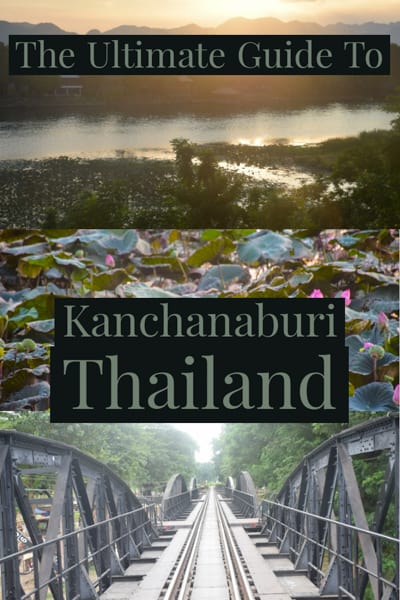
Kanchanaburi is a taste of rural Thailand that comes with a hefty side dish of history and home bridge over the River Kwai, also known as the death railway.
